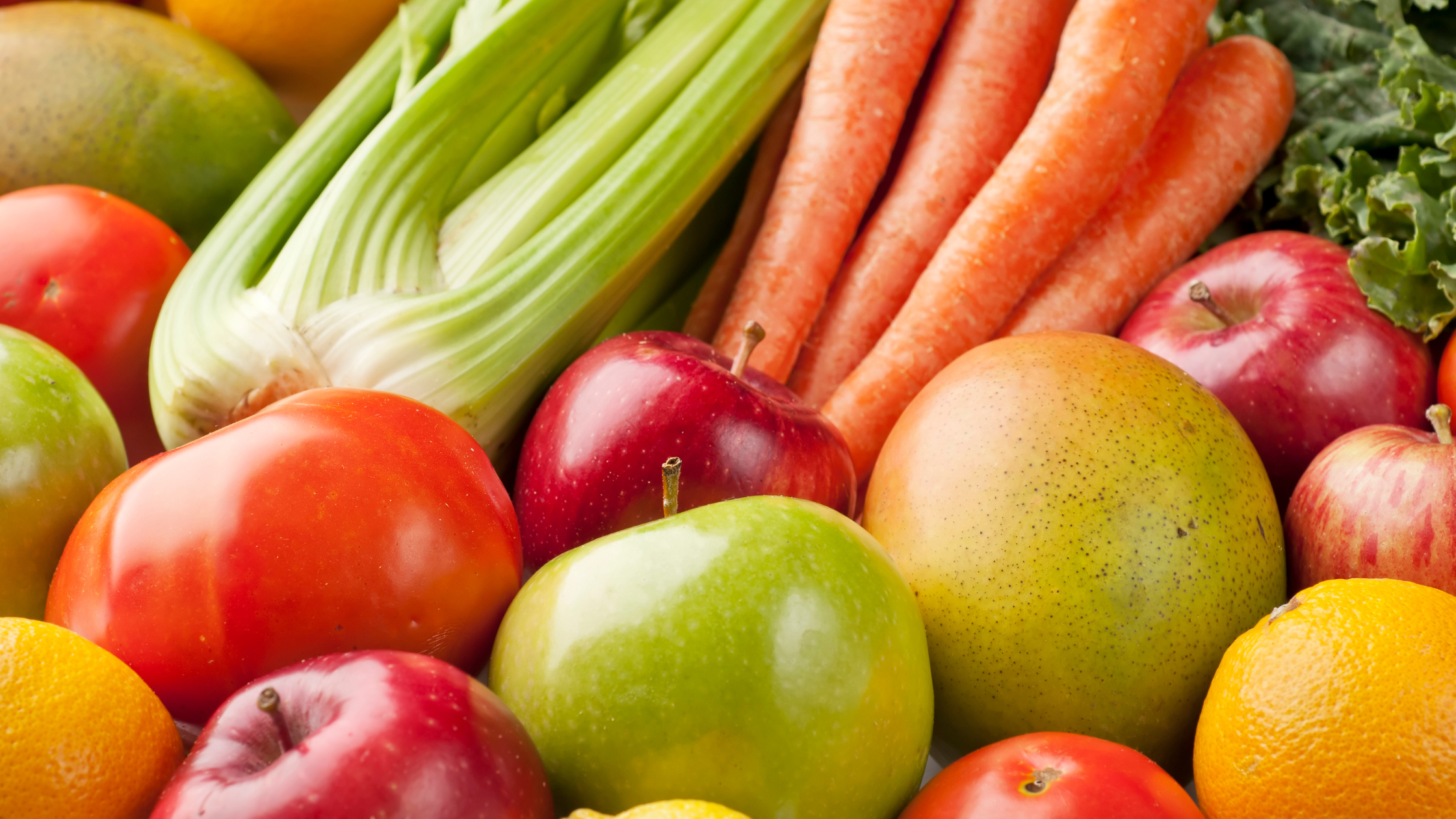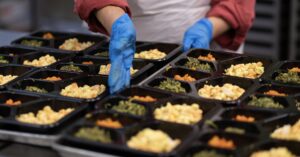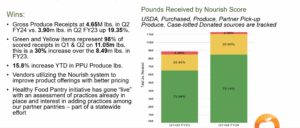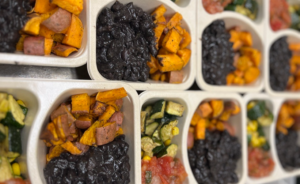Most food banks do a good job of tracking and talking about how many pounds of food they deliver. But they still have a ways to go in terms of knowing and sharing how much of that food is nutritious.
Partnership for a Healthier America wants to change that by getting food banks to not only prioritize nutritious food, but also create a culture within the food bank that emphasizes its importance. Its Healthy Hunger Relief Index gets food banks on track to doing that by helping them measure just how much their policies and procedures center on nutrition.
The self-assessment tool, introduced last year, seeks to make a food bank’s entire organization – not just the nutrition department – accountable to nutrition. “We want nutrition to be embedded across every department,” said Carmen Berry, Senior Manager at Partnership for a Healthier America.

Partnership for a Healthier America already has 60 food bank partners that it works with to promote healthy food distribution through a variety of strategies. Collectively, those partners have increased the amount of healthy food they distribute by 122 million pounds, while eliminating 19 million pounds of junk food. So far, about half of the 60 partners have also completed the index.
The index begins with a survey that includes five sections of about eight to 15 questions each, to be completed by as many employees of the food bank as possible. Under the domain of healthy sourcing, for example, the survey wants to know whether the food bank is nutrition-ranking at least 50% of its inventory. Under staff and board leadership, it wants to know if nutrition is included in the food bank’s mission statement. Under organizational culture, it asks whether the food bank is prioritizing the health and wellness of its own staff.
The survey helps to illuminate just how deeply nutrition is embedded into a food bank’s culture, and where it needs to make improvements. It also tends to uncover disconnects between a food bank’s activity in nutrition, and the level of awareness by staffers. “It’s a personal progress report that highlights where a food bank should focus,” Berry said.
At San Diego Food Bank this year, more than 40 employees, representing more than 50% of the staff, completed the index (up from six a year ago), leading to a number of surprising findings. One, for example, was that many in the organization did not know that the food bank nutrition-ranks its food. In general, there was wide variety in whether staffers were aware that certain nutrition-oriented initiatives were fully in place or in the early stages of development.

“It’s an indicator of where we need to do a better job of communicating,” said Shelly Parks, Senior Director of Programs. “We want to make sure everyone internally knows what we’re doing. Plus, we want them to be able to promote that in the community.”
Survey results can be a springboard for discussions at the highest level of the food bank. At Southwest Virginia Food Bank, the results of the index helped to rally the food bank’s board around the strategic importance of emphasizing healthy food, said Pamela Irvine, President and CEO, speaking at PHA’s virtual summit earlier this year. “It was a game-changer for us,” she said. Conversations sparked by the index led the board to emphasize “nourish neighbors” as a primary focus when it revamped its mission statement, she said.
Parks of San Diego Food Bank has shared the results of its survey at monthly director’s meetings and quarterly all-staff meetings, highlighting areas where the food bank needs to do a better job of educating staff members. As a next step, it is identifying the departments that lack knowledge about specific nutrition initiatives so the food bank can set a game plan for educational meetings.
San Diego Food Bank has built the metrics of the index into an excel dashboard and plans to continue participating in the index annually. Noted Parks, “When we started last year, we had zero idea how cool it would be.” – Chris Costanzo
Like what you’re reading?
Support Food Bank News
This article was made possible by the readers who support Food Bank News, a national, editorially independent, nonprofit media organization. Food Bank News is not funded by any government agencies, nor is it part of a larger association or corporation. Your support helps ensure our continued solutions-oriented coverage of best practices in hunger relief. Thank you!
Connect with Us:










